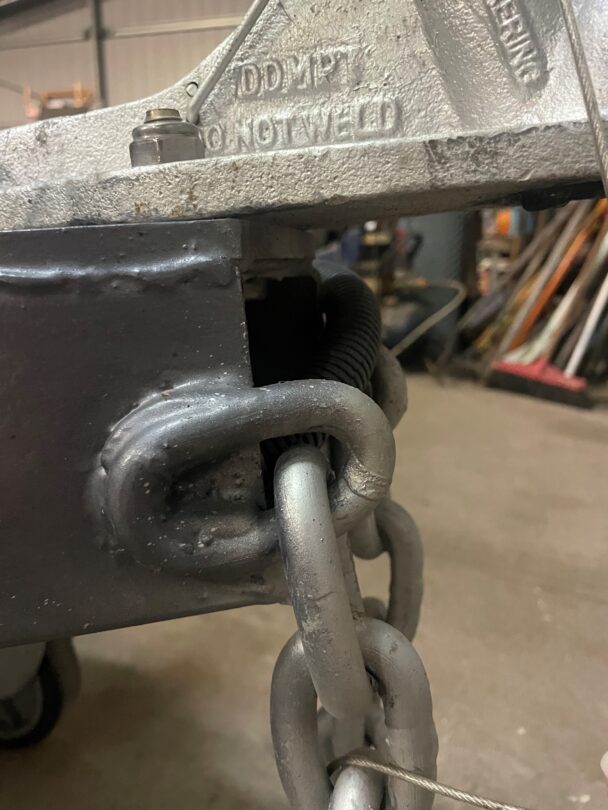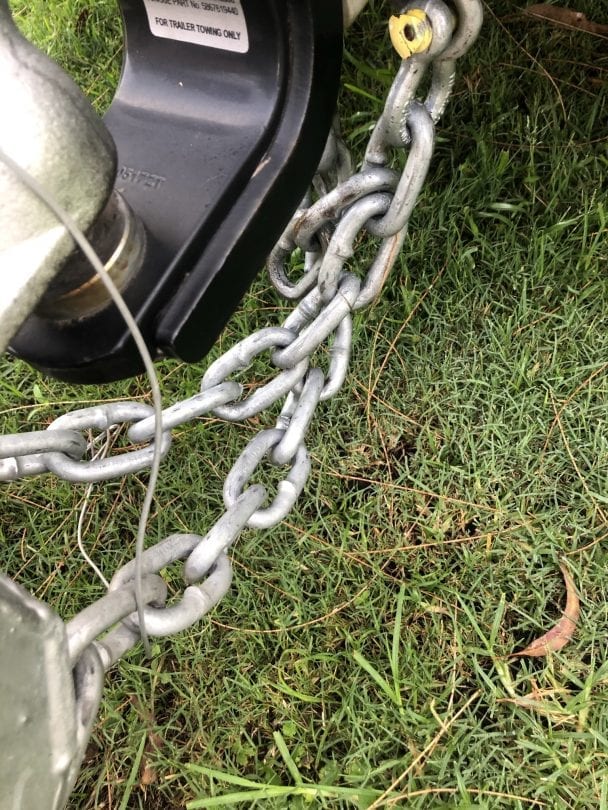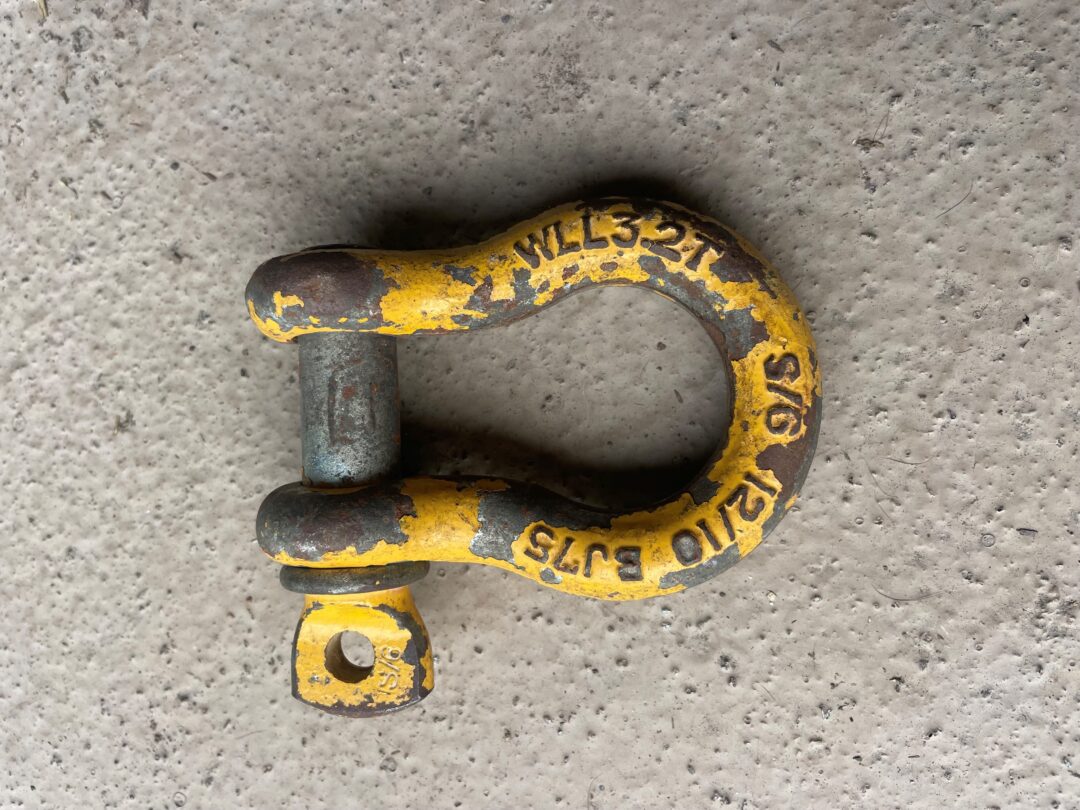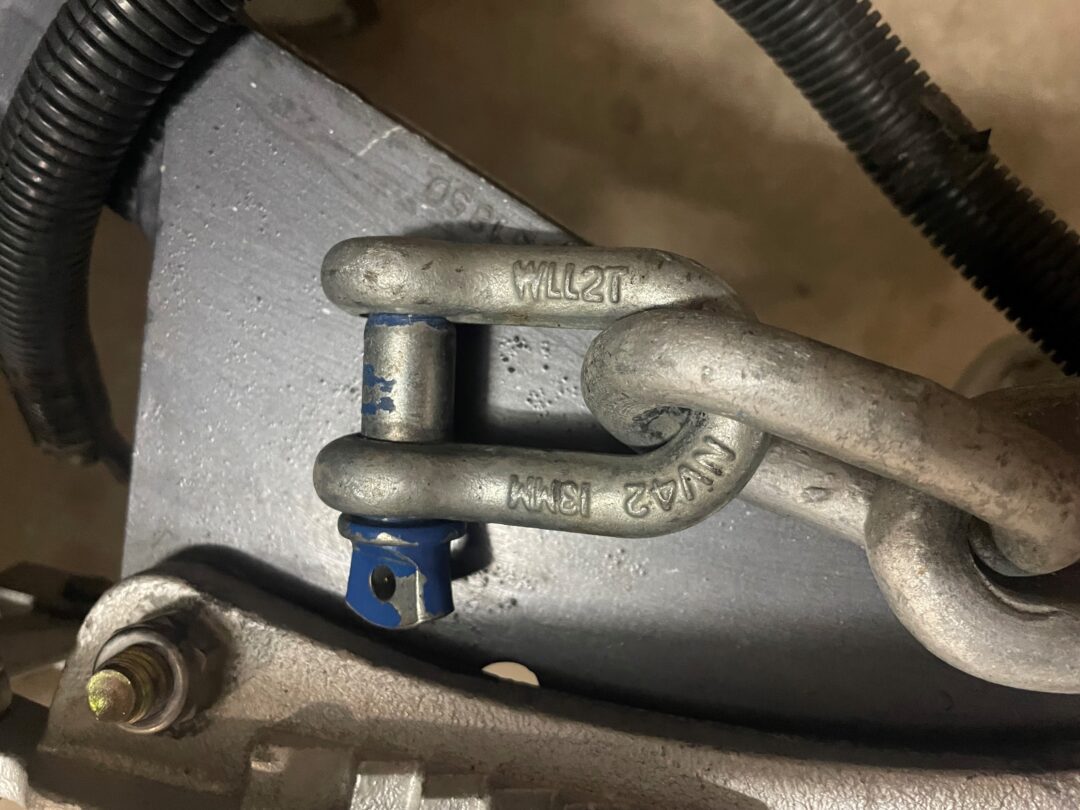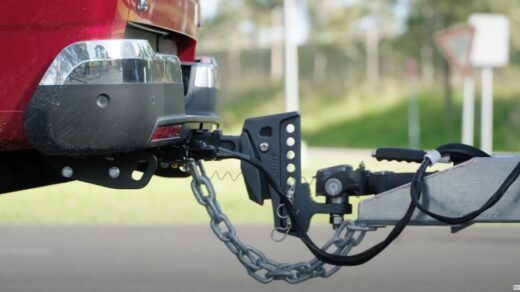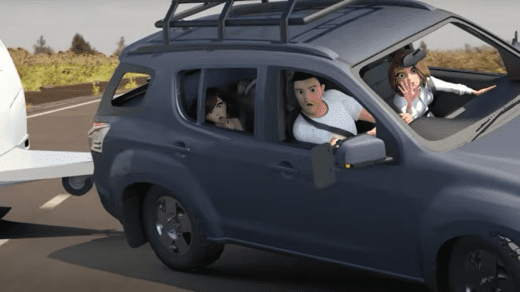Safety Chains
For a trailer with an ATM of up to 3,500kg, chains need to meet the requirements of AS4177.4 or have a cable which is appropriate for the application.
For a trailer with an ATM exceeding 3,500kg, a steel chain with a minimum of 800 MPa breaking stress conforms to the mechanical properties of a Grade T chain as specified in AS2321 is required.
The chain must be permanently attached to the trailer, they cannot be shackled. Below 3,500kg ATM, the chain can be welded to the drawbar with the weld forming 50% of the circumference of the link but the first link in the chain must have unfettered movement.
Once above the 3,500kg ATM then you need to use rated pin lock couplings. No welding is permitted. Placement needs to be practical, and if two points of attachment are needed, then you must place one on either side of the drawbar’s centre line.
Safety chains must be stamped with the chain’s capacity, the manufacturer’s identification, and the digits 4177.
AS4177 requires steel safety chains by the following:
- Up to 1.0 tonne, a chain size of 6.3mm.
- Up to 1.6 tonnes, a chain size of 8mm.
- Up to 2.5 tonnes, a chain size of 10mm.
- Up to 3.5 tonnes, a chain size of 13mm.
Your safety chains should not be so long that they reach the ground. If two are required, they should be crossed under the coupling so that in the event of the trailer decoupling, it should fall and be caught by the chains. They also cannot be too short that you are unable to make tight turns.
If your chains are not long enough, you can extend them with a Hammerlock by cutting the current chain so that one welded link stays attached to the trailer and attaching a new longer chain with the Hammerlock. Note – you cannot make the chain longer with additional D or bow shackles. Only one of these per chain is permitted and is used to attach the chain to the vehicle.




